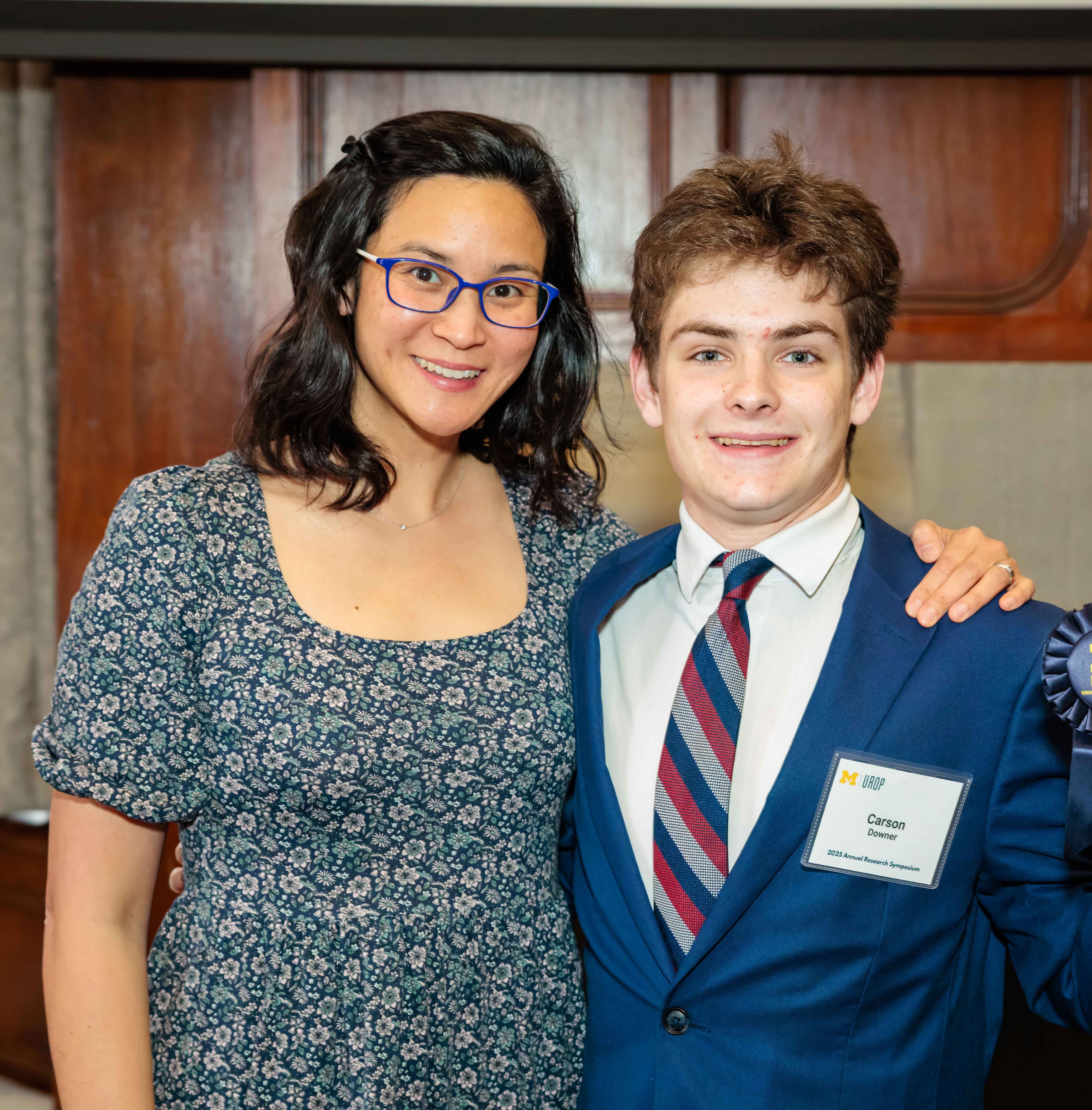Photo of MyVoice Director Dr. Tammy Chang and student researcher Carson Downer.
As someone pursuing a degree in Public Policy, with minors in political science as well as law, justice, and social change, University of Michigan rising junior Carson Downer is accustomed to working with numbers and statistical models.
“Shifting to open-ended responses and thematical coding required me to develop new ways of thinking about data,” said Downer, who joined the MyVoice national text-based study team in 2023. “It took time to get comfortable with interpreting narrative responses and ensuring I was capturing the nuances of youth perspectives accurately.”
Carson is the lead author of a MyVoice special report titled, “Youth Perspectives on Financial Independence,” the seventh project he has collaborated on as part of the team. The study investigates the challenges youth face, ranging from acquiring confidence in handling their own money to maintaining stable employment.
The report also describes how young people define financial independence and stability, focusing on factors influencing their path to self-sufficiency and providing insights into their financial aspirations and goals.
His co-authors include fellow U-M undergrad student Aamina Hussain, as well as his mentors Program Director Tammy Chang, MD, MPH, MS, and Program Manager Marika Waselewski.
Read the full report here.
This is the fourth report that he has taken the lead in producing. He also has explored research topics such as distracted driving, standardized testing, sports betting, eating disorders, gender-affirming care, and zero-proof alcohol consumption. In addition to creating the current report, he was heavily involved in interpreting the findings and shaping the narrative of the results.
According to the report, a large majority of youth in the survey sample (84% of the 586 participating youths), indicated at least some dependence on their parents or guardians to cover expenses, with 72% stating that they don’t consider themselves financially independent. Financial stability was commonly defined as a young person’s ability to live independently, whether through stable employment or major life milestones like marriage.
The most-supported expenses included food (33%), insurance (32%), housing (30%), and school (27%).
The data shows a decrease in parental financial support as youths age, reflecting a gradual shift toward independence, something that Downer could relate to personally, being a member of the age group that study participants belonged to.
“Like several respondents, I rely on my parents for core expenses such as housing and insurance while managing my own personal spending,” he said.
Among respondents aged 14 to 16 (n=34), 97% reported receiving financial help from their parents, compared to 68% of respondents aged 24 (n=47). Many younger respondents described relying on parents for necessities, while older respondents were more likely to cover these expenses themselves.
Few respondents (7%) believed that parental financial support should end at the legal age of 18. Most respondents instead emphasized financial stability as the key determinant for ending support, rather than a specific age, a result that Downer said surprised him.
“I also found it unexpected that many young adults, even at age 24, still relied on parental help – highlighting how financial independence is often a gradual process that than a clear-cut milestone,” he said.
Downer said he appreciated being able to translate participants’ nuanced and often personal reflections into clear themes, which he said can guide policy and programming. He also gives credit to his mentors Chang and Waselewski, as well as co-author Hussain, and their help and collaboration in helping him sharpen his skills in qualitative data coding, refining language used to describe survey results and interpreting data. All of these research activities can be translated into actionable steps.
“The process has been incredibly rewarding,” he said. “(It’s) given me firsthand experience in how public opinion research can uncover key social and structural barriers – insights that are often overlooked in traditional policymaking. The work has reinforced my belief in participatory research as a tool for equity-driven policy design and has helped me bridge theory with practice by applying classroom concepts to real-world issues like financial independence.”

